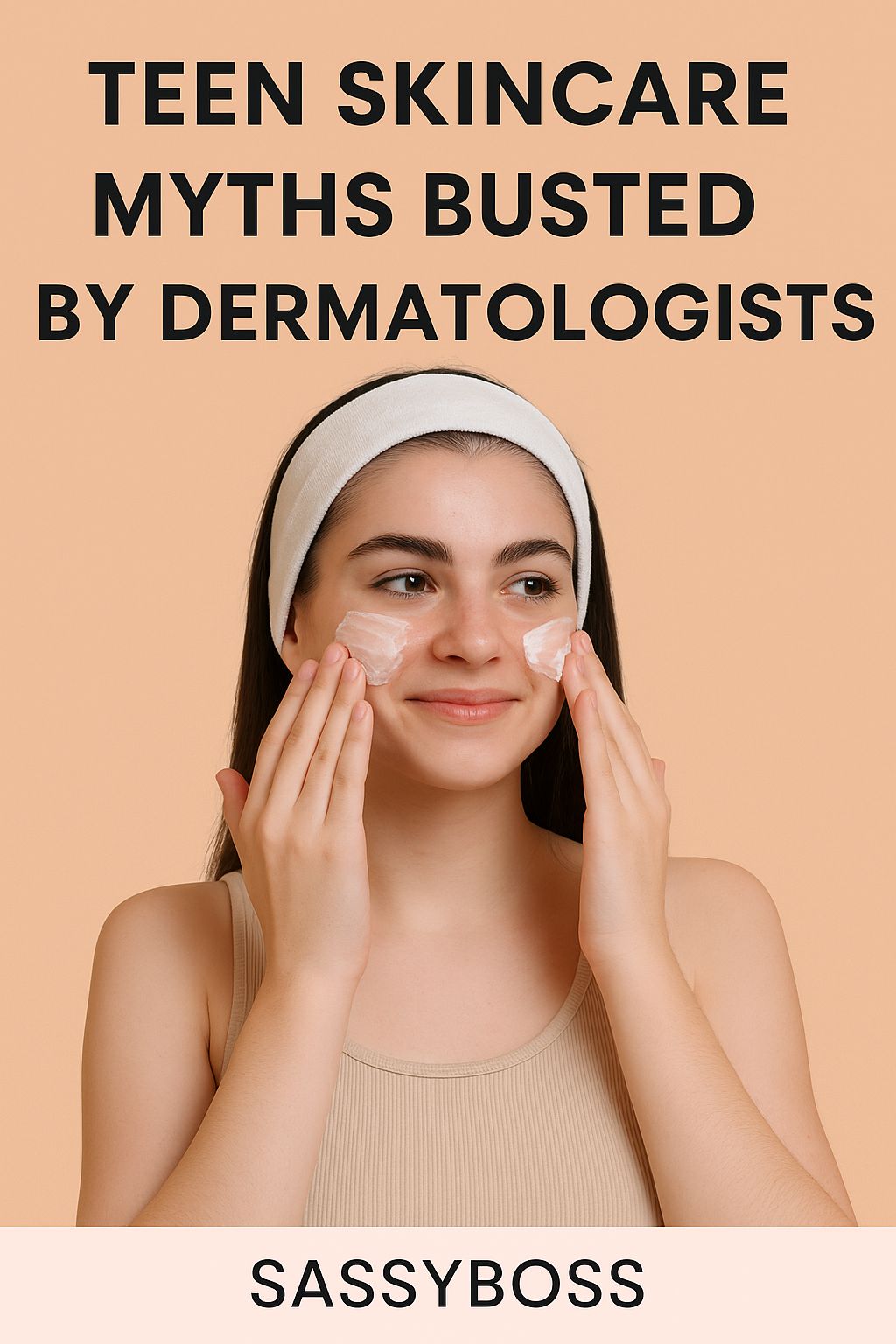Teen Skincare Myths Busted by Dermatologists
Navigating skincare as a teenager can be overwhelming. Between TikTok trends, Instagram influencers, and advice from friends, it’s easy to fall into the trap of skincare myths. Unfortunately, these misconceptions can do more harm than good, leading to breakouts, irritation, and even long-term skin damage.
To set the record straight, we’ve compiled some of the most common teen skincare myths and had them busted by dermatologists. Whether you’re dealing with acne, oily skin, or just figuring out your routine, this guide will help you make smarter decisions for your skin.
Myth 1: Oily Skin Doesn’t Need Moisturizer
Truth: Even if your skin feels greasy, you still need to moisturize.
According to dermatologists, skipping moisturizer can actually increase oil production. When your skin lacks hydration, it compensates by producing even more oil, which can clog pores and lead to breakouts. Choose a lightweight, non-comedogenic (won’t clog pores) moisturizer formulated for oily or acne-prone skin.
Pro Tip: Look for moisturizers with ingredients like hyaluronic acid or glycerin — they hydrate without heaviness.
Myth 2: The More You Wash Your Face, the Better
Truth: Over-washing can strip your skin’s natural oils and worsen acne.
Many teens believe washing their face multiple times a day will keep it clear. But over-cleansing can lead to dryness, irritation, and even increased breakouts. Dermatologists recommend washing your face twice a day — once in the morning and once at night — and always after sweating heavily.
Avoid: Harsh scrubs or cleansers with high alcohol content, which can damage the skin barrier.
Myth 3: Toothpaste Can Get Rid of Pimples Overnight
Truth: Toothpaste is not made for skin and can cause more harm than good.
This old-school hack is still floating around, but dermatologists strongly advise against it. Toothpaste contains ingredients like baking soda, hydrogen peroxide, and menthol that can severely irritate the skin, leading to redness, peeling, and even chemical burns.
Instead: Use a spot treatment with salicylic acid or benzoyl peroxide — both are dermatologist-approved for treating acne.
Myth 4: You Don’t Need Sunscreen If You Have Dark Skin or It’s Cloudy
Truth: Everyone needs sunscreen, every day, regardless of skin tone or weather.
UV rays can damage all skin types and lead to premature aging, sunburn, and even skin cancer. Even on cloudy days, up to 80% of UV rays can penetrate through clouds. Melanin does offer some natural protection, but it’s not enough to prevent damage.
Dermatologist Tip: Use a broad-spectrum SPF 30 or higher daily, and reapply every two hours if you’re outdoors.
Myth 5: Popping Pimples Makes Them Go Away Faster
Truth: Popping pimples can push bacteria deeper, leading to more inflammation and even permanent scars.
It’s tempting — we get it. But squeezing pimples usually worsens the problem. Dermatologists recommend hands-off approaches. If you absolutely need to treat a breakout, opt for acne patches, salicylic acid treatments, or see a dermatologist for a safe extraction.
Myth 6: Natural or DIY Skincare Is Always Better
Truth: Not all natural ingredients are safe or effective for the skin.
Some teens turn to pantry staples like lemon juice, baking soda, or coconut oil as DIY treatments. However, these can throw off your skin’s pH, cause burns, or clog pores. “Natural” doesn’t always mean “safe,” and just because something is edible doesn’t mean it belongs on your face.
Better Alternative: Use products that are clinically tested and formulated for your skin type.
Myth 7: Acne Will Just Go Away on Its Own
Truth: While some teen acne can improve with age, ignoring it can lead to scarring and long-term skin issues.
Mild breakouts might clear up with basic care, but persistent or severe acne often requires treatment. Dermatologists stress the importance of early intervention to prevent long-lasting damage. There are plenty of options available — from over-the-counter products to prescription medications — that can make a real difference.
Final Thoughts: Building a Smart Skincare Routine
Teen skin is going through a lot, thanks to hormones, stress, and sometimes poor habits. But with the right knowledge, you can keep your skin clear, healthy, and glowing.
Dermatologist-approved skincare routine for teens:
1. Cleanse twice daily with a gentle, pH-balanced cleanser.
2. Moisturize with a lightweight, non-comedogenic moisturizer.
3. Protect with sunscreen every morning.
4. Treat acne with appropriate active ingredients (like benzoyl peroxide or salicylic acid).
5. Avoid harsh DIY remedies and always patch test new products.
Always remember: Skincare isn’t one-size-fits-all. If you’re unsure what’s right for your skin, consider visiting a dermatologist for personalized guidance.
